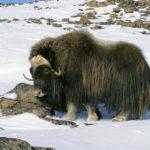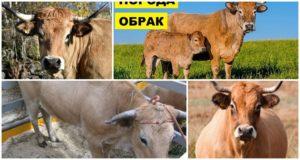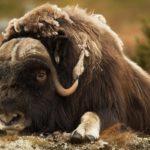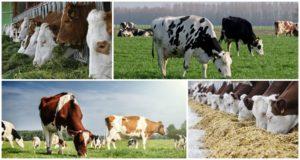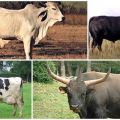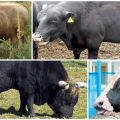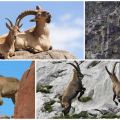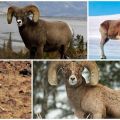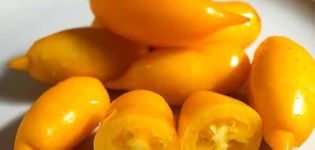Where and in what natural zones do musk oxen live, what they look like and what they eat
The musk ox is a cloven-hoofed mammal of the Bovids family. The Latin name - "ovibos", or "ram ox", reflects the unique combination of the external massiveness of yaks and the herd instinct of rams. The musk ox is genetically close to the Asiatic buffalo. The animals were first seen at the end of the 17th century in Canada. There are several protected places in the world where the musk ox lives today.
Origin of the species and description
In the prehistoric era of the Miocene, the helmet-bearing musk ox wandered in the mountains of Central Asia. Whether ancient animals differed in appearance and behavior from modern ones is unknown. Archaeologists have found insufficient remains to recreate their appearance.
About five million years ago, the harsh climate forced musk oxen to descend from the Himalayan mountains and develop a new territory - the north of Eurasia and Siberia. The flourishing of the animal population fell on the Pleistocene period. Then the path of the musk ox is traced to North America. It is endemic to Alaska and Greenland.
The second name of the animal - "musk ox" - contradicts the physiology of musk oxen, since they lack musk glands. The Canadian Indians used the word "musked" to describe the wetlands in which large artiodactyls were found.
In a modern description, a musk ox looks like this:
- height at the withers - 135 centimeters;
- weight - 260-650 kilograms;
- body length - 190-260 centimeters;
- hump on the back of the neck;
- the front of the body is wider than the back;
- rounded large hooves;
- elongated head;
- the horns are bent upward;
- the short tail is hidden under the coat.

Males are larger than females. The size of musk oxen is also influenced by the abundance of food. A cloven-hoofed animal living in captivity weighs more than its wild counterparts. But the largest musk oxen live in western Greenland.
The main feature of animals is a long thick hair that hangs down to the hooves. Its length is 60 centimeters on the sides. The shaggy musk ox is completely covered with it. Thanks to the dense undercoat, which is 8 times warmer than a sheep's, it does not freeze in frost. Males are distinguished by a thicker hairline on the nape. The color of the animals is brown. White bulls are almost never found.
Musk ox wool consists of eight types of pile and is the warmest in the world.
A musk ox cub is called a calf. From birth, it is protected from the cold by subcutaneous fat. Musk ox calves are born one at a time. Two pups per litter are rare, which is attributed to abundant and nutritious feeding. In the wild, animal multiplicity is not found.
Where does the musk ox live?
Modern habitats of musk oxen:
- the North American continent, the land of Grineliev and Parry;
- north, west, east of Greenland;
- Canadian Banks Islands, Victoria;
- the continental part and islands of the Arctic archipelago of Canada;
- islands in the Bering Sea off the coast of Alaska - Nunivak and Nelson.
The area of residence of the musk oxen in North America remains the Arctic National Reserve in Alaska. The animals are adapted to the harsh climate.
The southernmost region of their distribution is located in the taiga of Canada - in the east and north of the mainland.
The extermination of Canadian musk oxen in the early 20th century marked the beginning of the protection and settlement of animals in Eurasia. After World War II, the settlers were accepted by Norway and Sweden. But their number has not increased significantly.

The population of musk oxen was restored in the tundra of Russia. In the 70s they were received by Taimyr and Wrangel Island. The number of animals increased to fourteen thousand by 2015, but in 2019 it decreased by half due to poaching. The population of the musk ox has survived on the protected Wrangel Island. Other areas of distribution of musk oxen on the European mainland:
- the polar Urals;
- Yamal;
- The Republic of Sakha, which belongs to Yakutia;
- Zavyalov Island, Magadan Region.
The Taimyr and Wrangelsky musk oxen live in the Gornokhodatinsky reserve of the polar Urals. A shelter has been created for animals - coral. Some of them constantly live in natural conditions. In the Magadan region, unique artiodactyls can be seen in the Solnechny reserve.
The musk ox is distributed only in the northern hemisphere, in a natural zone with arctic, subarctic and temperate climates. In the southern hemisphere, there is a suitable climate for musk oxen in Antarctica, but animals will not find food in ice.
What animals eat
The herbivorous musk ox obtains food by digging up a layer of snow. The animal eats herbs, shrub branches, mushrooms, berries, moss lichen. During the warmer months, musk oxen use saline soil to replenish the need for mineral salt.
Artiodactyls can dig up half a meter of snow. The front hooves of animals are wider and longer than the hind ones, and are specially adapted for tearing the snow cover. But food at a greater depth is not available to musk oxen. Also, musk oxen cannot break through solid crust.
Therefore, glaciation often causes hunger and extinction of animals.
In winter, musk oxen feed on dry, frozen vegetation that is difficult to digest. Therefore, they spend less time searching for food than digesting. In the spring, herds go to the river banks, where they feed on young forbs.
Lifestyle and character traits
The musk ox wanders in search of food and water: in the winter it climbs the mountains, and in the spring it descends into the valleys. Thanks to the warm wool, it is adapted to low air temperatures. Animals wait out snow storms, lying with their backs to the wind. The behavior of musk oxen is the same as that of wild sheep:
- females with calves unite in a herd;
- males live in a separate group or singly;
- in each herd there is a leader, after whom it moves in search of food;
- in summer, animals feed in the morning and evening, and rest in the midday heat;
- food and predators are sensed thanks to the developed sense of smell and keen eyesight.
Musk oxen live for 12 years. Good adaptation to conditions and protection from poachers increase their life expectancy to fourteen years.
Social structure and reproduction
The rutting season for musk oxen begins in July and lasts until December. At this time, one or more males join the group of females. They compete in strength, head-on.Sometimes fights end with the death of one of the rivals. Pregnancy of female musk ox lasts 9 months. Newborn cubs weigh 8 kilograms. On the day of giving birth, they already stand up and walk alongside their mothers. Females find their children in the herd by smell, and calves identify the mother by appearance and voice.
Maternal groups are formed in a herd of musk oxen. Cubs gain experience in cooperative games that last up to two months. Then youngsters switch to adult food, try moss, grass and start fewer games. Calves feed on mother's milk from four months to a year.
Members of a herd of musk oxen have a close social relationship. The calves are immediately accepted into the group. More boys are born than girls. On fatty breast milk, they quickly gain weight - up to forty kilograms by two months.

Natural enemies
In nature, musk oxen are hunted by:
- wolverine;
- wolf;
- brown bear, white.
Musk oxen are sensitive to the approach of predators, so it is difficult to catch them by surprise. A fight with large horned animals is deadly for enemies. Poachers are more terrible for populations. Horns and animal hair are of high value. Musk oxen notice the slightest movement and, in case of danger, run away, developing a speed of 40 kilometers per hour.
If the animals cannot escape, the males form a circle in the center of which females and small calves gather. The circle members reflect the attacks of predators, but are defenseless against the bullet.
Population and status of the species
The musk ox is not listed in the International Red Book. It is not in danger of extinction in the absence of significant climatic changes and the interest of illegal hunters. There are 148 thousand individuals in the world. The population of musk oxen on the largest island in Greenland is 12 thousand. It is prohibited to hunt animals that live in the National Park. There is a quota for hunting bulls living outside the protected area in the south of the island.
In the Arctic and in Russia, musk oxen are protected. Shooting of animals is prohibited in Yakutia and the Magadan nature reserve. A fine has been established for poaching - almost 8 million rubles.
Yak and musk ox: differences
Geneticists can distinguish a musk ox from a yak or a bison - by the diploid number of chromosomes. Outwardly, the animals are very similar. The musk ox and the yak have a hump and long warm hair. The difference will be visible if the animals are placed side by side - the shape of the head, nose and horns.
The following table will help you compare animals:
| Parameter | Yak | Musk ox |
| Height at the withers (meters) | 2 | 1,3 |
| Body length (meters) | 4 | 2 |
| Tail length (centimeters) | 75 | 14 |
| Weight (kilograms) | 1000 | 650 |
| Hump | Short, not highlighted by wool | Shaggy, covered with a thick mane |
| Neck | Long with short hair | Hidden by massive fur |
| Horns | Thin, extend horizontally in different directions, smoothly bend up | They begin with a convex base on the forehead (in females it stands out with white fluff), descend vertically on the sides of the head, bend forward and up at eye level |
| Tail | Agile, covered with coarse hair, horse-like | Not visible under the coat |
| Wool | Smooth on the sides, shaggy, long, reminiscent of a skirt on the legs and stomach | Hangs down evenly to the hooves, very thick on the neck |
| Color | Brown, gray, black, with white spots | Dark brown, black |
Yaks are larger, but look sleeker. They are found in the mountains of Tibet, India, China, Kazakhstan, Mongolia, Iran. Most of the animals are domesticated. Wild yaks live only high in the Tibetan mountains, avoid people and die out. Their social organization and behavior are the same as those of the musk ox.
Musk oxen are also planned to be bred as pets. From them you can get valuable giviut fluff, milk and meat.In addition to the practical benefits, musk farms aim to improve the ecology of the regions and preserve the representatives of prehistoric fauna.

